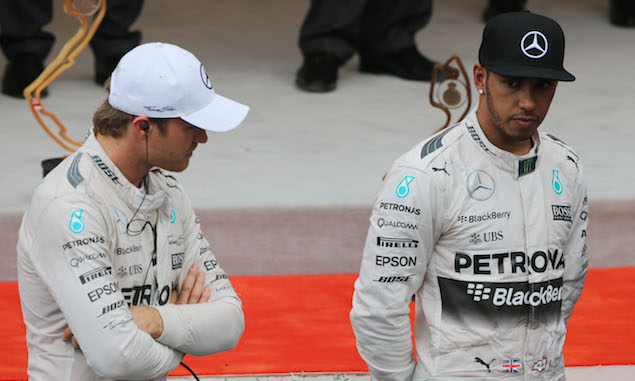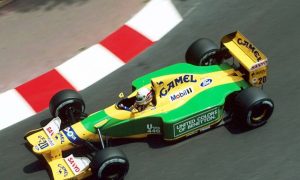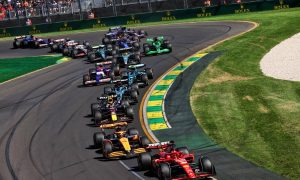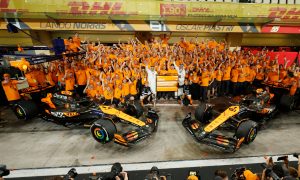I’m not a great fan of religion but after the Lewis Hamilton-Monaco fiasco I couldn’t help thinking of this apposite quote from the Bible:
"Hear now this, O foolish people, and without understanding; which have eyes, and see not; which have ears, and hear not."
Tradition plays a key role in our favourite sport, be it the love of certain historic race tracks, spraying champagne on the podium, the need to turn up at the venue five days before the event, or the silly rule that the fastest cars start the race with the huge advantage of being at the front.
Another strange custom is that, despite everything to do with timing at the race track being computer-controlled, with umpteen back up systems, many engineers and team-managers still insist on carrying a stop watch around their neck during the Grands Prix. They might as well wear a fob watch and a three piece suit for all the good it does.
The oddest anachronism is that the team principal and a group of acolytes made up of engineers and strategists watch the race from the aptly named Prat Perch on the pit wall. Sitting on thrones, they are kings of all they survey. You can’t get any nearer to the drama and action and in fact, you’re not even allowed to take up your position on the wall until after the first lap mayhem is over, in case any cars or bits of them fly over the catch fencing.
But the reality is that you can’t actually see a bloody thing from the pit wall, faced as you are with a bank of monitors showing the world feed images, the timing screens, the strategy map displaying the position of every car on track and the weather forecast. All those screens effectively blot out any view of the track. If you wanted your engineers to actually see the cars fly past, you’d do better putting them in with your VIP guests in the Paddock Club overlooking pit lane.
On either side of the Prat Perch you will find another feature left over from the technological dark ages, namely the pit board signallers. A modern F1 car dash displays plenty of information, including lap time and in case you hadn’t noticed, drivers and engineers spend most of their time chatting over the pit-to-car radio, so the pit board is of limited value, unless the radio fails. The board might as well have a message reading “We are still here and fully supportive of your efforts.”
Pit signalling is a task usually allocated to the drivers’ trainers and, in truth, this simply serves to give the team catering girls a break from the endless mindless muscle flexing chat-up routine for which driver trainers are famous. As for the team principals, preening like parakeets on the perch, it’s always provided an opportunity to get noticed, from the days of Flavio Briatore illegally smoking during the race, to Luca di Montezemolo waving to non-existent fans, to Ross Brawn chewing bananas, or Christian Horner’s nervous leg tapping, with new boy Maurizio Arrivabene and his Ronsealed hair getting the most air time these days.
Before motor sport discovered safety, it was far easier for the sport’s grandees to play to the crowd, by actually standing on the track itself: think Lotus boss Colin Chapman jumping up and throwing his tweed cap in the air or Mercedes’ imposing Alfred Neubauer, who clearly inspired Rod Stewart’s debut solo album, “An old raincoat will never let you down.”
The only time I can remember genuine physical intervention in a race from the pit wall was in the 1997 Australian Grand Prix in Melbourne. After a lacklustre qualifying in the Benetton, Jean Alesi was moving up the order as those in front of him came in to the pits to refuel. Then it was the Frenchman’s turn to take on more petrol and the message duly went out, but the radio wasn’t working. A pit board with a giant “IN” arrow was shown again next time round; Jean whizzed by oblivious. Two laps later and the aforementioned Briatore was waving at his driver and with three laps gone, engineer Nick Wirth, one of the tallest men in the sport, was leaning so far over the pit wall he could almost touch Jean’s helmet, but still the Frenchman failed to heed the call until, inevitably, he ran out of fuel at the side of the track. The “chat” between team boss and driver after the race was quite something and allegedly included the immortal line from Briatore, “why you think I wave, do you think I say hello cuckoo!”
I can’t help but think Hamilton’s pointless Principality pit stop would not have happened if the engineers had simply looked at the track to see what was going on in the Swimming Pool area.
Therefore I would posit that the Prat Perch structure is a waste of time and the engineers, who prefer to watch the race through their virtual world of timing screens and data feeds, might just as well control things from the motorhome. I can’t help but think Hamilton’s pointless principality pit stop would not have happened if the engineers had simply looked at the track to see what was going on in the Swimming Pool area. Mind you, Hamilton doesn’t do himself any favours with his generally moody attitude over the radio and you can imagine the engineers, rolling their eyes when he came on to say his tyres were getting cold: “He wants to come in. Oh well, better say yes, or it’ll be another tantrum.” That may have had a bigger influence on the flawed decision than all the talk of data and algorithms. To be fair to Lewis however, he was stoic and dignified in defeat.
There’s one flaw in my argument to abolish the pit wall set-up: in Monaco, the team principal and engineers actually sit in an office above the garage, facing away from the track. Surely that couldn’t have anything to do with Hamilton’s downfall could it?










